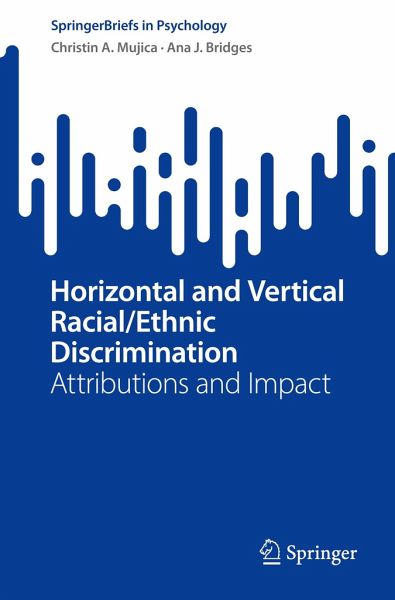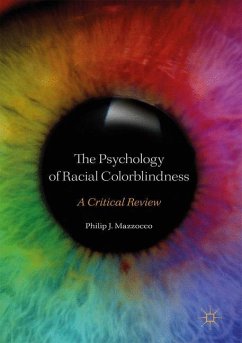
Horizontal and Vertical Racial/Ethnic Discrimination
Attributions and Impact

PAYBACK Punkte
19 °P sammeln!
This book explores the nuances of how discriminatory events are viewed by people of color. Based on the authors' research, it seeks to illuminate the contextual and relational variables that influence perception of discrimination. The research suggests that: Ingroup members can perpetuate racist discrimination; Consistent with attribution theory, discrimination by White people is more often attributed to trait rather than situational causes; Consistent with cultural betrayal trauma theory, perceived racist discrimination by ingroup members can be more acutely distressing because it is unexpect...
This book explores the nuances of how discriminatory events are viewed by people of color. Based on the authors' research, it seeks to illuminate the contextual and relational variables that influence perception of discrimination. The research suggests that:
Ingroup members can perpetuate racist discrimination; Consistent with attribution theory, discrimination by White people is more often attributed to trait rather than situational causes; Consistent with cultural betrayal trauma theory, perceived racist discrimination by ingroup members can be more acutely distressing because it is unexpected. Filling a gap in the microaggression literature, this book provides an in-depth picture of discrimination and what individuals can do to offset the insidious effects of White supremacy. It highlights the importance of centering the experiences of people of color in describing ambiguous social interactions, with greater attention to the context, background, and relationships between perpetrators and targets of racist discrimination. It presents a clear next step in advancing our understanding of the attributes of discrimination. The benefits of comprehensive education and critical consciousness development are emphasized.
Ingroup members can perpetuate racist discrimination; Consistent with attribution theory, discrimination by White people is more often attributed to trait rather than situational causes; Consistent with cultural betrayal trauma theory, perceived racist discrimination by ingroup members can be more acutely distressing because it is unexpected. Filling a gap in the microaggression literature, this book provides an in-depth picture of discrimination and what individuals can do to offset the insidious effects of White supremacy. It highlights the importance of centering the experiences of people of color in describing ambiguous social interactions, with greater attention to the context, background, and relationships between perpetrators and targets of racist discrimination. It presents a clear next step in advancing our understanding of the attributes of discrimination. The benefits of comprehensive education and critical consciousness development are emphasized.














